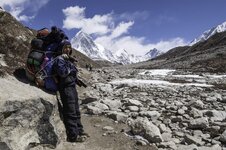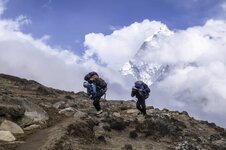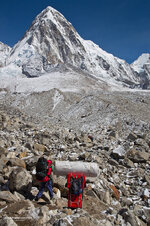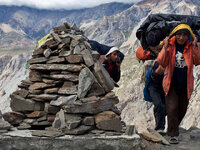Maverick1
WKR
- Joined
- Jun 1, 2013
- Messages
- 2,498
Keen Targhee IIWhat boots are you using?
Follow along with the video below to see how to install our site as a web app on your home screen.
Note: This feature may not be available in some browsers.
Keen Targhee IIWhat boots are you using?
but there is a reason high altitude animals are hoofed. Stiffness increases performance in the mountains both going up and down.
Fair question. I’ve been doing foot exercises designed for people climbing/scrambling class 3&4 terrain. Not saying it’s feasible to pack an elk in your socks but there’s a lot of strengthening we can do there. From what I’ve learned modern society has us using our ankles front to back and not allowing our arches to flex. We should utilize and strengthen the three dimensional movement of our ankles and support our arches while flexing but not locking them in place.How do you propose to support your feet and ankles when carrying out half an elk over uneven and steep terrain without supportive footwear?
I always wore what you are calling a heavy shank boot in residential framing and general construction for three decades, and others wore everything from tennis shoes to light boots to boots like mine.
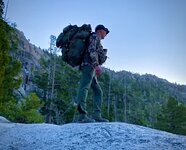
Can you share what your transition consisted of?I didn't start the transition until I was in my 50's. I began knowing it would take a "long time." In my case it definitely did. Around the 10 year mark I felt I was finally "there." Now, after 15 years, I am able to take summer backpacking trips in Luna sandals as well as pack meat and hunt/hike all day every day in minimalist barefoot style shoes. During this time all my annoying foot issues cleared up as well.
It was a great move for me.
"Our ancestors did not have a lot of things we have now. That in no way means that it was ok or better."I have to wonder when I read stuff like this sometimes. Our ancestors did not have a lot of things we have now. That in no way means that it was ok or better. What kind of pain and discomfort did they have to endure. Our bodies are full of flaws and we use so many things to make our bodies operate better than they were "designed". Some people will benefit from certain types of footwear and some from other types.
I got up early one morning to finish packing out an elk and forgot to put my boots on. I had put on my cross trainers while I got ready and then just started hiking out. I didnt even realize it until I was a few miles in. I made the trip out without any issue but is was mild terrain. Got me thinking about if I really need a stiff heavy boot.

It was never anything scientific or even very organized.Can you share what your transition consisted of?
The risk of catastrophic failure is way too high. I’m all for it for day to day normal life. One shift of a small boulder, one exceptionally sharp piece of something, one bad step while tired with a heavy pack. No thank you. There are many reasons the average lifespan of people has increased over time and improved footwear is definitely on that list. Wear boots that fit.
